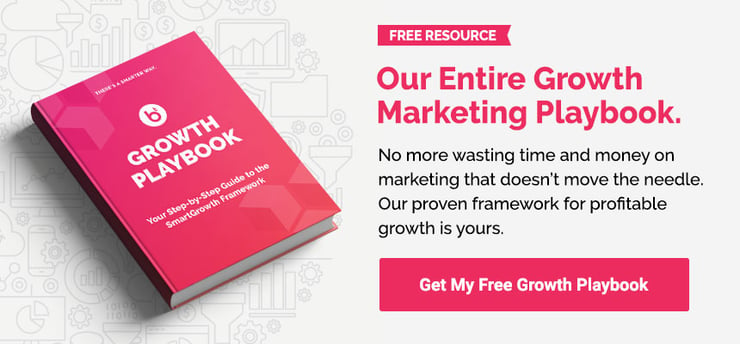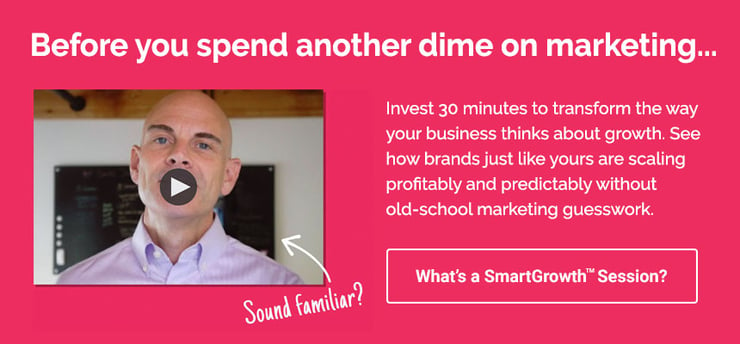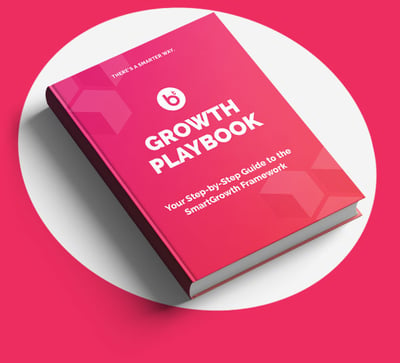Which is better when it comes to SaaS sales, show or tell? Why not do both? The more ways you can communicate your value, the easier it is for you to reach your audience. Along with self-directed demos, sales decks provide visuals and copy to support your in-person presentation or replace it. What do the best SaaS sales decks have in common? Find out in this article.
What is a SaaS sales deck?
A sales deck is a common type of presentation used to introduce your brand and communicate your value proposition to potential customers. Decks consist of a series of digital slides or similar digital content and may accompany a human-powered sales presentation or serve as a standalone pitch. Sometimes SaaS sales decks are called pitch decks. Which can be confusing since the term pitch deck also refers to a presentation for a business’s potential investors. While some of the same copy and design principles apply to both types of decks, we’re not talking about investor decks in this article.
Sales decks got their start well before cloud computing and wide bandwidths made presentations easily shareable. Then, they were almost exclusively a salesperson’s silent partner, carried from meeting to meeting and displayed on a laptop or portable projection screen. Sales decks added polish to a salesperson’s presentation and gave them a way to hold their audience’s interests and present complex ideas. Graphs made data understandable and images of smiling customers provided social proof. You get the idea.
Now, your SaaS sales deck can travel with or without you. You can share your deck online or deliver a digital copy to your prospect's desktop or mobile device. Like a digitized brochure, they enhance your SaaS brand’s message through copy and design. You can customize your SaaS sales deck for each presentation or prospect with dynamic content.
You can even add video snippets or audio to your deck, although you should be cautious about not going overboard with your technical effects. Because now, as then, the primary purpose of your SaaS sales deck is to enable sales. Your deck should support your SaaS growth marketing strategy with content aligned with your brand’s message.
Why use a SaaS sales deck?
Consistent, shareable and engaging, SaaS sales decks are popular because they provide a visual means of communication. And human beings like visuals.
When and how to use sales decks for your SaaS depends on your marketing strategy, resources, audience and your audience’s stage in the buyer journey. Even though your business has a consistent brand message, you won’t always communicate that message in the same way to different prospects or different members of a B2B buying team. Change your deck to fit each situation.
For example, when you present to end users of a new piece of technology, show them how it works. When your deck is aimed at members of the executive team, use it to illustrate the gains they’ll achieve in productivity and profits by adopting your solution.
Take advantage of your deck’s flexibility as a digital content asset to optimize it for every opportunity.
Your sales deck can:
- Be present for buyers where and when your sales team can’t
- Communicate asynchronously so decision-makers can view and review your pitch at their convenience
- Allow you to make your sales case to members of a buying group that can’t attend an in-person presentation
- Show prospects images of products or services that you can’t take with you on a sales visit or during a demo
- Adjust to meet the wants and needs of different audiences or changing circumstances
- Cut down on your sales team’s travel costs
- Shorten sales cycles by delivering relevant details when and where your prospects want them
Building the perfect SaaS sales deck
A SaaS sales deck is a device of education and persuasion. It should tell a story with your buyer’s success as the central theme. In your deck, present a logical argument for why your buyer has a problem and how your product can solve it. Support your argument with persuasive devices such as case studies, independent data, trust signals and social proof.
Before you prepare a SaaS sales deck, complete your growth marketing plan and identify when and where a sales deck can best help you achieve your business objectives. Create each deck only after you’ve defined the buyer’s persona and journey stage for the intended audience.
Finally, decide whether your deck will be a complete presentation or supplement an in-person one. Each slide in a standalone deck should include both images and copy that convey a complete idea. Remember that your sales personnel may not be available immediately to answer viewer’s questions, so include all necessary context. Follow good design practices, though. Be complete, but concise.
Decks that will be presented by a sales team should contain less copy than standalone versions. If your audience is busy reading your deck, they won’t be listening to your salesperson.
Follow your brand’s style guide when building your deck. Maintain consistent fonts, formatting and color selections across all your slides. Add your SaaS’s logo and contact information to your deck and keep your tone of voice on-brand. Particularly when you distribute a shareable deck, your sales deck may be someone’s first impression of your organization.
The essential elements for an effective SaaS sales deck
With these above guidelines in mind, you’re ready to build your deck.
Here’s what to include:
- A strong opening slide. Your first slide or panel is like the headline of an article or the subject line of an email–it needs to grab your buyer’s attention and make them want to learn more.
- A slide that raises awareness. Are you solving a problem or presenting an opportunity to your prospects? This is the segment where you’ll make them aware of that problem or opportunity. Use facts and a sprinkling of emotion to emphasize the significance of the issues you are presenting.
- A solution. Your buyer now knows they have a problem. They need to eliminate potential risks to their business or figure out how to grasp a new opportunity. This portion of your deck explains how your SaaS meets their needs.
Add additional slides based on your audience and goal. Agitate the problem you’ve raised or illustrate the scope of the opportunity with statistics and data insights. Use slides featuring favorable industry reports, customer testimonials or other proofs of your brand’s quality and reliability.
Also, add slides that overcome potential objections and answer likely questions. Illustrate how your solution works, compare your solution to alternatives and explain why it is the more effective, more complete choice. Review the costs and projected ROI of your solution. Finally, don’t forget to say what you want buyers to do at the end of your presentation. Close your sales deck with a CTA that directs your buyers to the next step on their journey.
Build your SaaS sales deck on a strong, growth-focused foundation
Growing your SaaS company requires strategic deployment of every asset at your disposal, including sales decks. The process starts with a marketing plan that outlines a clear path to exponential revenue growth—without guesswork.
Book a one-on-one SmartGrowth Session with Brand Theory today to discover what a repeatable, profitable customer acquisition system can do for your B2B SaaS. It’s just 30 minutes and you’ll leave with a free growth game plan. Are you ready to show the world what your SaaS offers? Take the first step now.






.png)
.png)
.png)
